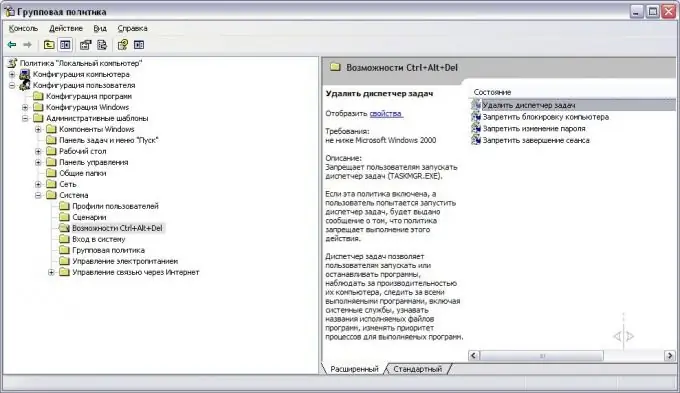The need to disable the dispatcher may be needed not only by the system administrator to prevent erroneous user actions that can harm the operating system, but also simply by the parents monitoring the child's actions at the computer.

Instructions
Step 1
Go to the "Start" menu, then select "Run". In the window that appears, type the command “gpedit.msc” and press the Enter key. If you wrote the command without errors, then the "Group Policy" window will open before you, allowing you to configure both the system as a whole and the settings for users.
Step 2
Click on the plus sign next to User Configuration.
Step 3
Click on the "Administrative Templates" tab. Also click the plus sign next to this item, which will allow you to see the submenu of this item, which allows you to access functions that are directly related to the system registry.
Step 4
Left-click on the schematic cross in front of such a submenu item as "System" to access the settings of the system itself directly.
Step 5
Select "Features Ctrl + Alt + Del" - this way you will go to the system settings of the task manager without using the registry editor.
Step 6
Highlight the item "Remove Task Manager" with the left mouse button. On the left, you will be given a detailed description of this function, as well as the requirements for the system for its normal functioning, and both the function of disabling / enabling the task manager itself and the purpose of the dispatcher itself are described.
Step 7
Right-click on the "Delete Task Manager" item to open the context menu. Select Properties. You can also click on the link of the same name in the policy description. You will see a window for managing the policy of disabling the dispatcher.
Step 8
Use the "Enabled" item and click on the "Apply" button. That's it, now you can't start the dispatcher in the usual way.
Step 9
Press the key combination Ctrl + Alt + Del and you will see a window that says that the task manager is disabled by the administrator.






